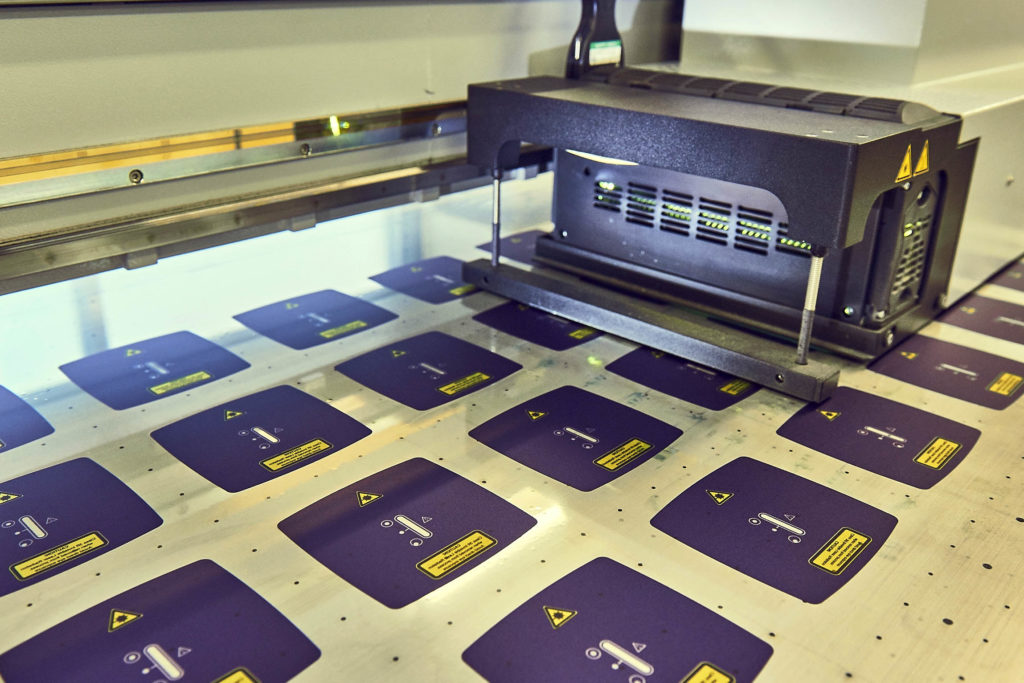
Digital Print Technology in the Labels Industry
News
Innovative printing has been very much at the forefront of the media as of late, as 3D printing continues to advance at a staggering pace, it is not just 3D printing that we should be getting excited about. Technology has veritably transformed the digital printing industry, with the process now capable of executing a huge range of projects with very impressive results.
What is digital printing?
The concept of printing is not new. Prints have been used for hundreds of years across a range of applications from creating signs, labels, posters and works of art, to producing newspapers and books on a mass scale. However, in the old days, traditional printing would have been done using a manufactured print or press which then had ink applied to it, before the text or image was then effectively stamped onto the substrate, be that paper, metal, wood or another less conventional medium.
Digital printing, meanwhile, is a method of printing from a digital-based image directly to a wide range of media, without the need to prepare such a stamp. The technology has advanced at such a rate that now there is no substrate that daunts us. Paper, plastic, metal, glass, wood, leather – you name it and we can digitally print on to it.
Will digital print technology eventually replace screen printing?
Absolutely not, as Simon explains: “When you merge screen printing and digital printing, they absolutely complement each other. To have both processes is quite a step up from just having one or the other. They do actually work together to produce some really great results.”
While digital printing may be capable across a wide range of applications, there are some techniques for which the manual element of screen printing will always prove preferable.
What are the challenges of digital printing?
While digital printing may have made a traditionally manual process a great deal easier, that is not to say that it does not come without its challenges.
“The main hurdle with digital printing is getting the files and data in a usable form. It has to be understood that whatever you put into that digital press is what is going to be replicated on your substrate. For example, if you put in a file that is of a low resolution, that’s exactly what you’re going to see on your finished product. Unfortunately, the digital print process doesn’t think for itself or ‘soup up’ something that’s not actually usable. It will just make an absolutely fantastic copy of a bad image,” explains Simon.
“The presses are brilliant now – they give you opaque, brilliant colour with no pixelation. You would not be able to tell that some of the things we print here are in fact digitally printed. However, if the file is not right, then that is what you are going to get.”
What does the future have in store for digital printing?
If the progression of 3D printing is anything to go by, very exciting prospects indeed. The great thing about digital technology across all applications – be it printing, computing, manufacturing, communication and so on – is that it is continually evolving and advancing. Accordingly, digital printing will only get better and better
“The thing about digital printing is that it doesn’t limit your imagination. We’re not constrained by only being able to get so far like we may be with a screen print. It’s all about ‘how far can we push this technology?’ and ‘how far can we push these presses?’ to try to achieve something that’s a bit special. With the 3D printing, which is indeed in its infancy, I’ve seen some amazing results. So if you’re going to get an image in there too, and there’s no reason why you can’t, then who knows what the future has in store?” says Simon.
We embrace the challenges with which our clients may come to us and on our ability to say ‘yes’ to printing projects. That is why we have had people come to us with gates and bedroom doors that need images printing on to them, why we customise, personalise one off free issue parts, why we stay on after hours, experimenting with substrates and printers to see what amazing creation we can bring to life by the next morning.
“Fine Cut are always ready for – and sometimes even championing – the next step in digital print production,” concludes Simon.
Let's discuss your project.
Whether you have a full brief or just an idea, we'd love to share our expertise with you.
Contact us“Part arrived this morning, now they are ready for dispatch to our customer, can’t thank you enough for the quick turnaround, it’s very much...”
“Please accept this as a very late thank you to Fine Cut, and especially Colin & Keith for stamping and labelling our spectacle frames. Thanks”
“This looks INCREDIBLE! I didn’t realise you would be able to achieve such a deep v cut for the letterforms. So brilliant!”
“Excellent customer service, and very reliable. Always help you meet requirements and expectations, especially with logos designs including personalisations!”
